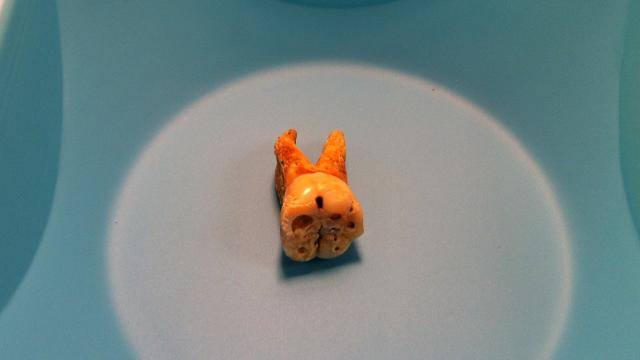You’ve undoubtedly heard about the Bubonic plague, but the chances of you knowing next to anything about the Justinian plague are significantly slimmer. That’s because no one really knew anything about the Justinian plague — until recently, that is. Now, two ancient, plague-ridden teeth are finally teaching us a little more about one of the worst pandemics in history — including the fact that another outbreak could be just around the corner.
The two 1500-year-old teeth, which belonged to Justinian plague victims buried in Bavaria, Germany between 541 and 543 CE, contained tiny fragments of actual plague DNA, making them the oldest pathogen genomes we’ve ever accessed (the Black Death having occurred just over 600 years ago). The particularly fascinating bit, though, is that in reconstructing the Justinian genome, scientists have found that both it and the Bubonic plague (which didn’t strike until 800 years after it) are two different strains of the very same pathogen. This means that a third version of the rodent-carried plague could very well be in our imminent future.

Traditional costume of a medieval plague doctor.
As Tom Gilbert, a professor at the Natural History Museum of Denmark, told the AP:
What this shows is that the plague jumped into humans on several different occasions and has gone on a rampage. That shows the jump is not that difficult to make and wasn’t a wild fluke. Humans are infringing on rodents’ territory, so it’s only a matter of time before we get more exposure to them.
We also now know that the Justinian strain of the pathogen originated in Asia, as opposed to Africa, which had been previously thought to be the source. What we don’t know, though, is anything regarding the pathogens’ evolutionary time-scale, suggesting that even earlier pandemics could have been caused by even more distinct-yet-related strains, all coming from the same Y. pestis pathogen.
Of course, if another outbreak were to manifest someday soon, the scientists assure us that modern antibiotics would severely limit the disease’s potential damage. However, if the plague were to evolve into an airborne version, limiting its spread would become far more difficult. According to Hendrik Poinar, director of the Ancient DNA Centre at McMaster University in Canada, that type of disease can kill within 24 hours of infection.
Our best bet now is to pay close attention to rodent populations. Because if they start dying off in mass numbers, there’s every chance that we could be next. [Medical Xpress via McMaster University; AP]
